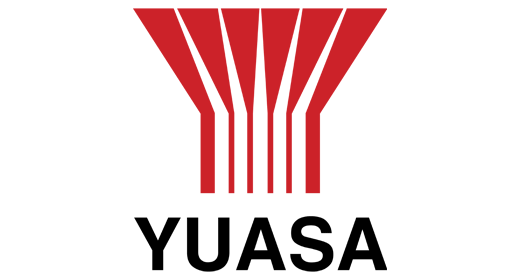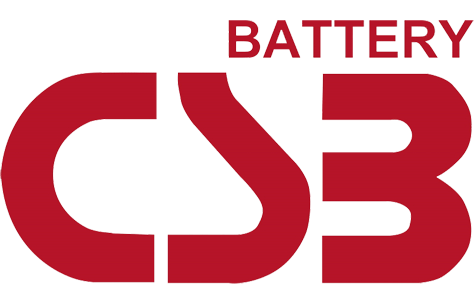Understanding the Lifespan of UPS Batteries and the Future of VRLA
Uninterruptible power supply (UPS) systems have become a staple in nearly every industry that relies on power consistency, providing an invaluable safety net during instances of power loss or electrical issues. A critical component of these UPS systems is their battery. But just like with any battery, a UPS battery's lifespan is not eternal – it wanes over time and must eventually be replaced.
Understanding the lifespan of a UPS battery, specifically the popular Valve Regulated Lead Acid (VRLA), can provide invaluable insights for businesses focused on alacrity and incessant uptime. This section explores the lifespan of UPS batteries, the factors that influence them, the current state of VRLA batteries, and the foreseeable developments in this field.
Please bear in mind - the next time you hear the hum of a UPS system, what's humming is the chorus of meticulously designed batteries, diligently safeguarding your business's operational continuity. With advancements in technology, these silent sentinels are becoming more efficient, powerful, and longer lasting. So, let's delve deeper into the world of UPS batteries, their lifespan, and what the future holds for them.
UPS Battery Lifespan
From essential data centres to small business applications, Uninterrupted Power Supply (UPS) systems play a pivotal role in ensuring continuous, reliable power. A significant aspect of maintaining this fail-safe power solution is understanding the lifespan of a UPS battery.
General Battery Lifespan
As the energy storage backbone of a UPS system, the battery's lifecycle is a keen interest among users. It's critical to remember that most UPS batteries are expected to have an operating life of between three to five years. However, the actual lifespan may vary conspicuously due to multiple factors, which we will soon explore.
Factors Affecting Lifespan
Many elements can affect a UPS battery's longevity, including the operating environment, maintenance practices, and cycle usage, among others. Batteries prefer temperature-controlled, clean environments for optimal performance. For instance, high temperatures can shorten a battery's lifespan substantially, and so can be a neglected maintenance routine. Failure to conduct routine checks can lead to poor battery performance and even premature failure. Proper battery handling and regular testing are therefore vital to maximising battery lifespan.
Lithium-ion vs. VRLA Lifespan
When speaking of UPS batteries, it's common to see a contest between Lithium-ion and Valve Regulated Lead Acid (VRLA) types mainly. VRLA batteries, traditionally used in UPS systems, usually have a lifespan of 3 to 5 years. On the other hand, Lithium-ion batteries, now widely utilised because of their numerous benefits, typically enjoy an impressive 8–10-year lifespan. Industry experts often recommend replacing VRLA batteries every three to five years due to their shorter lifespan, while Lithium-ion batteries require less frequent replacements, thanks to their greater longevity.
In summary, understanding your UPS battery's lifespan and the various factors affecting it can help implement effective maintenance strategies, ultimately prolonging your system's life and enhancing its reliability. Whether you're using VRLA or Lithium-Ion batteries, always remember that regular upkeep and pre-emptive replacements can save precious time and prevent untimely power disruptions.

The Future of VRLA Batteries
As we continue to stride into the age of renewables, there is a greater need than ever before for efficient storage technologies. One such solution - the sealed, maintenance-free VRLA (Valve Regulated Lead-Acid) Battery - has been witnessing waves of innovation that promise to redefine its future trajectory. With trends such as enhanced cycle life, a growing focus on carbon emission reduction, and various manufacturing advancements, we can anticipate these batteries to play a crucial role in the coming years.
Advancements in VRLA Battery Technology
In the past, the primary focus of VRLA battery technology involved increasing the cycle life of the batteries coupled with reducing their environmental footprint. Current advancements today are concentrated mainly on improving their energy-storage capacity and recharging proficiency. Battery manufacturers are also putting in work to reduce the overall size, weight, and cost of these batteries.
Using AGM Technology for High-Energy-Density
The introduction of Absorbent Glass Mat (AGM) technology has revolutionised the energy density of the VRLA batteries. Unlike other similar battery forms, AGM batteries integrate thin glass fibres woven into a mat, raising the energy density significantly. They also allow a faster rate of discharge and a considerable upgrade in performance without escalating the size or cost.
Development of Antimony-Free Lead-Acid Batteries
Perhaps one of the most exciting breakthroughs in the industry has been the development of antimony-free lead-acid batteries, which are primarily calcium-calcium lead-acid batteries. This innovation has reduced water consumption, making these batteries even more environmentally friendly. Battery manufacturers are keenly exploring avenues to do away with the usage of antimony due to its negative environmental impact.
Innovations in Manufacturing Process
Extraordinary changes are taking place in the manufacturing processes of VRLA batteries to meet future demands. Nevertheless, the focus is now being shifted to improving the quality of manufacturing along with the cost-effectiveness of production. This includes the development of alternate manufacturing techniques that reduce the impact on the environment.
VRLA In Clean Energy Storage
Clean energy adoption has seen an unparalleled surge over recent years, on the back of the colossal global push for a sustainable future. As solar and wind power grow in significance, so does the need for reliable battery storage solutions. VRLA batteries are proving to be the ideal solution, thanks to their efficiency, value for money, and recyclability.
Collaboratively, with innovations in battery technology, manufacturing processes, and sustainable methods, VRLA batteries are metamorphosing the world of energy storage. The journey ahead is one of immense opportunities and its advancement will undeniably pave the way for a resourceful, reliable, and renewable energy future for everyone.
Improvements in Lithium-Ion UPS Batteries
If you've been following recent tech developments, you may have noticed how lithium-ion (Li-ion) UPS batteries have evolved tremendously. They've come a long way, with significant improvements noted over the past decade—especially regarding their lifespan, safety, capacity, and power output.
Recent Developments in Lifespan, Safety, Capacity and Power Output
Let's delve a bit deeper to understand the innovations that have fuelled the remarkable progress in these four key parameters.
- Extended Lifespan: Today's Li-ion batteries last remarkably longer than their older counterparts. Advanced chemistry and improved manufacturing techniques have reduced wear and tear, effectively extending the battery life. Mitigation of the memory effect—a common concern with traditional batteries—has also aided in increasing their lifespan.
- Enhanced Safety: Safety has always been a crucial concern with Li-ion batteries, but recent advances have mitigated many of these risks. The incorporation of built-in safety measures, such as temperature and voltage controls, has reduced the likelihood of overheating and short-circuiting, thus preventing potential fires and explosions.
- Increased Capacity: A significant advantage of modern Li-ion UPS batteries is the increase in energy storage capacity. Through continued research and development, these batteries can now store more power than ever before, thus providing extended backup times during power outages.
- Boosted Power Output: Last but certainly not least, the power output of Li-ion batteries has seen a substantial boost. With the optimisation of internal processes, these batteries can now handle higher discharge rates, making them even more effective in demanding applications.
As a parting thought, decades have passed since the first lithium-ion UPS batteries were introduced. Their journey, marked by continuous improvement and progression, is a testament to the persistent innovation in this field. We're living in an era where advancements in technology transform the way we live and work, and the transformation of Li-ion UPS batteries definitely stands as a classic example of such an evolution. The future is undoubtedly exciting, with these improvements paving the way for the development of more efficient and robust power backup solutions.
Global UPS Battery Market Growth
The magic of Uninterrupted Power Supply (UPS) systems lies in their silent promise to keep your vital equipment running soundly, even in the face of electric disruptions. Ever wondered what fuels these resilient devices? The heartthrob of UPS lies within their robust batteries, nestled quietly to provide an uninterrupted power supply in your hour of need. Your trusted device's growth orbits around a dynamic market, the UPS battery market, which is projected to bask in significant progression in the forthcoming years.
A noteworthy point of interest is the anticipated surge the Universal UPS Battery Market is set to enjoy. Positioned on the runways of economic acceleration, these energy mastodons are predicted to grow at a compound annual growth rate (CAGR) of a considerable 10.6% from 2021 to 2028. This growth is fuelled by a multitude of factors, cranking up the demand for UPS systems, and by extension, their batteries.
The reasons for this upward curve in the UPS battery market extend beyond the simplistic demand and supply dynamic. An exploration of these factors reveals fascinating insights:
- Increasing dependency on electronic devices: With an exponential rise in the use of electronic equipment in both home and office settings, the demand for a steadfast power supply is more intense than ever.
- Technological advancements: The continual flux of technological advancements beckons the need for a supporting power source. From data centres to hospitals, the demand for UPS batteries to prevent power disruption is gaining momentum.
- Energy storage development: Expansion in sectors like renewable energy is broadening the horizons for UPS battery market growth. The need to store and effectively harness energy has amplified the call for UPS batteries.
- Growing concern for data loss: Fear of data loss due to power outages has paved the way for an ever-growing need for UPS systems, with businesses investing in strong UPS batteries to protect their valuable data.
The growth journey of the global UPS battery market doesn't stop at raw figures. In fact, this projected growth is indicative of a paradigm shift in how we approach power supply and data protection. Based on the available data, magnified global efforts towards creating robust telecommunication infrastructure and efforts to go green are firmly rooted in this blossoming UPS battery market.
The future of the global UPS Battery market is indeed luminous, guided by the propagation of technology and the relentless need for an unfaltering power supply. This thriving market landscape is a testament to our ever-growing, technology-driven modern society.
Applications and Demand for VRLA Batteries
From alternative energy storage systems to powering data centres, the VRLA (Valve-Regulated Lead-Acid) batteries are revolutionising power solutions. These batteries' multi-faceted usability and significant technological advancements have led to a surge in their demand worldwide. In this section, we will explore how data centres and evolving requirements in battery applications are driving the demand for VRLA batteries.
Usage in Data Centres
The digital era has seen an enormous growth of data centres, which essentially serve as the nerve centre for critical business operations. It is therefore vital to secure these systems with reliable and efficient power sources. Here's where the VRLA batteries come into play. They are renowned for their high performance and long service life which makes them the perfect choice for providing power backup solutions in these landscapes. Besides, these batteries offer significant advantages over traditional power sources, such as resilience to harsh conditions and lower maintenance costs.
It's the capability of VRLA batteries to ensure that data centres continue their functions without any hindrance that has led to the surging number of data centres worldwide being powered by these batteries.
Changing Requirements in Battery Applications
As the world advances technologically, so do the requirements in battery applications, pushing for more adaptable, efficient, and durable power solutions. This need for innovation has been a driving factor behind the increasing adoption of VRLA battery technology.
VRLA batteries are adaptable and versatile, catering to a wide range of applications, including portable devices, electric vehicles, and alternative energy systems. They boast high energy density, outstanding performance under varying conditions, and a significantly longer lifespan. These superior qualities have led to the expanding adoption of VRLA batteries in increasingly diverse applications, marking their class apart from traditional battery technology.
To sum up, the exceptional characteristics and reliable performance of VRLA batteries have positioned them at the forefront of modern power solutions, meeting varying needs across industries. These factors, coupled with their increasing deployment in data centres and the changing requirements in battery applications, are driving the demand for VRLA batteries. It can be reasonably argued that the influence and importance of VRLA batteries will only grow in times to come.
Conclusion
The constant innovations and developments in UPS batteries – both VRLA and Lithium-ion – ensure that these power sources remain integral components of data centres, commercial infrastructures, and numerous other critical applications. It's clear that they're more than just backup options; they're an essential part of a strategic approach to consistent and reliable power availability.
With a leading provider like Secure Power, you can not only acquire top-tier three-phase UPS systems but also gain from a team of professionals trained in the latest technical knowledge. Secure Power offers preventative maintenance packages, free backup power health checks, and a wealth of expertise to help you choose the right UPS battery that fits your unique requirements.
Whether it's optimising battery lifespan or navigating the distinct advantages of VRLA and Lithium-ion technologies, this guide illustrates the importance of understanding UPS batteries from both a usage and market perspective. Innovations in UPS battery technology are ongoing, broadening their applications and making them not just an aspect of power security, but a cornerstone for future clean energy storage solutions. As the global UPS Battery market surges forward, consider Secure Power as your trusted partner in maintaining power consistency and boosting business resilience.
Frequently Asked Questions
-
What is the lifespan of UPS batteries?
The lifespan of UPS batteries typically ranges from 3 to 5 years. However, this can vary depending on factors such as usage, battery quality, temperature conditions, and maintenance.
-
How can I extend the lifespan of UPS batteries?
To extend the lifespan of UPS batteries, you can follow these tips: 1. Keep them in a cool and dry environment, 2. Regularly inspect and clean the batteries, 3. Avoid overloading the UPS system, 4. Perform regular battery tests and replacements as needed, and 5. Follow the manufacturer's guidelines for maintenance.
-
What is VRLA and its future in UPS batteries?
VRLA stands for Valve Regulated Lead Acid, a type of battery commonly used in UPS systems. VRLA batteries are maintenance-free, spill-proof, and have a longer lifespan compared to traditional flooded lead-acid batteries. As technology advances, the future of VRLA batteries in UPS systems looks promising, with improvements in efficiency, durability, and energy storage capacity.
-
Can I use VRLA batteries in any UPS system?
VRLA batteries can be used in most UPS systems, as long as they are compatible in terms of voltage requirements and physical size. It is important to check the UPS manufacturer's specifications and guidelines to ensure proper compatibility.
-
What are the advantages of VRLA batteries over other battery types?
Some advantages of VRLA batteries over other battery types include 1. Maintenance-free operation, 2. Lower risk of leaks and spills, 3. Higher energy density, 4. Ability to be installed in various positions, and 5. Longer lifespan and better cyclic performance.














